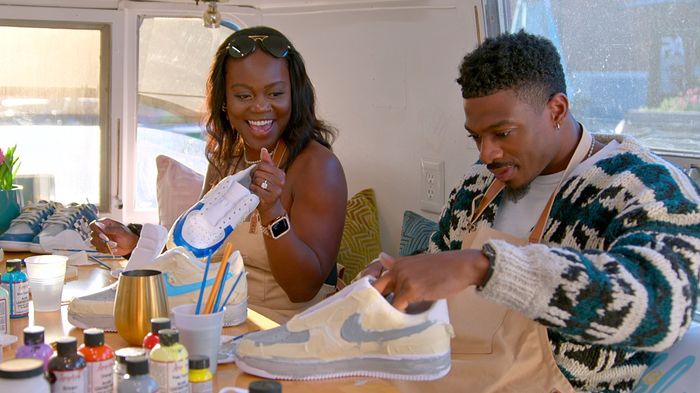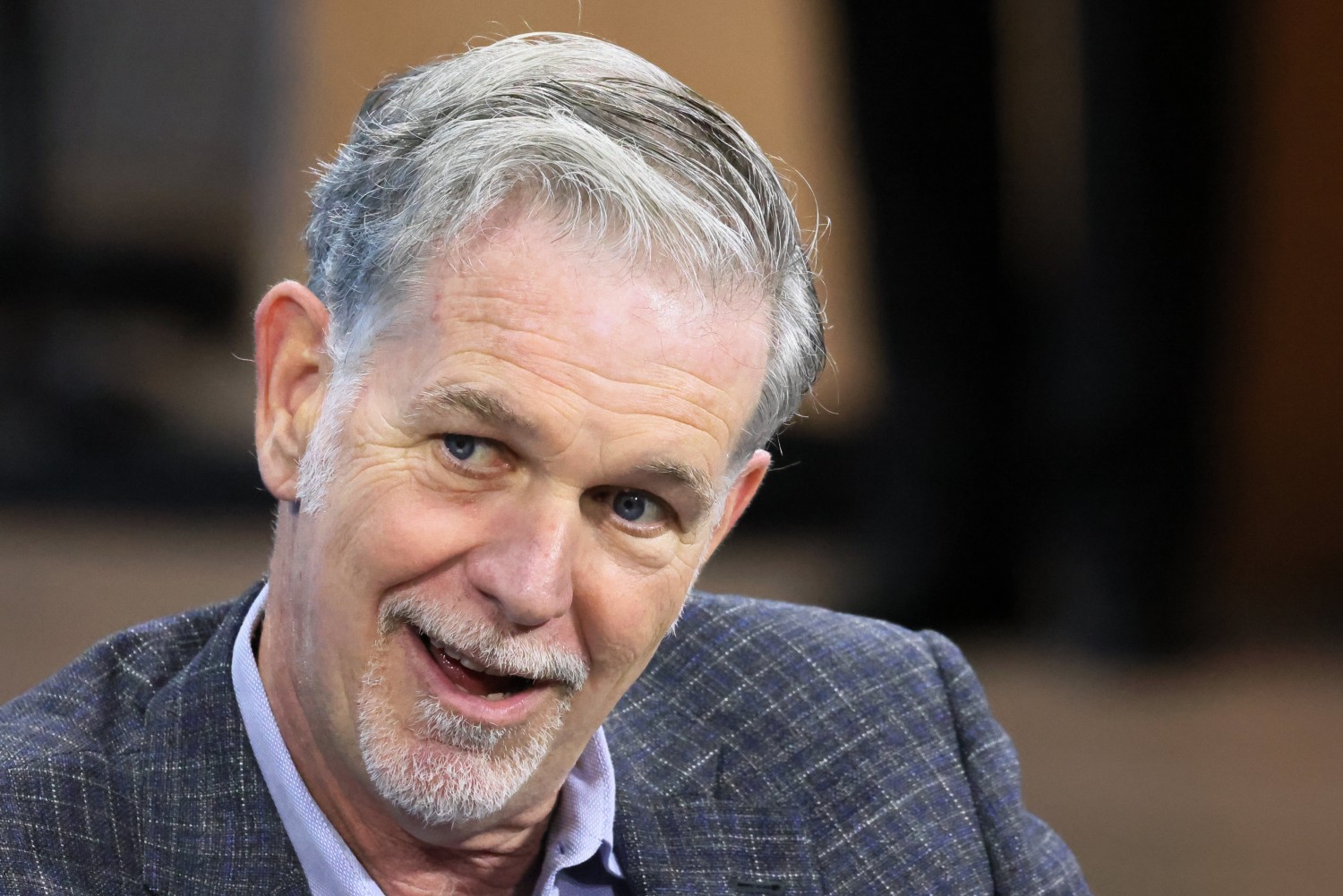This article is more than
1 year oldHow Netflix Conquered Hollywood — And Then Broke It
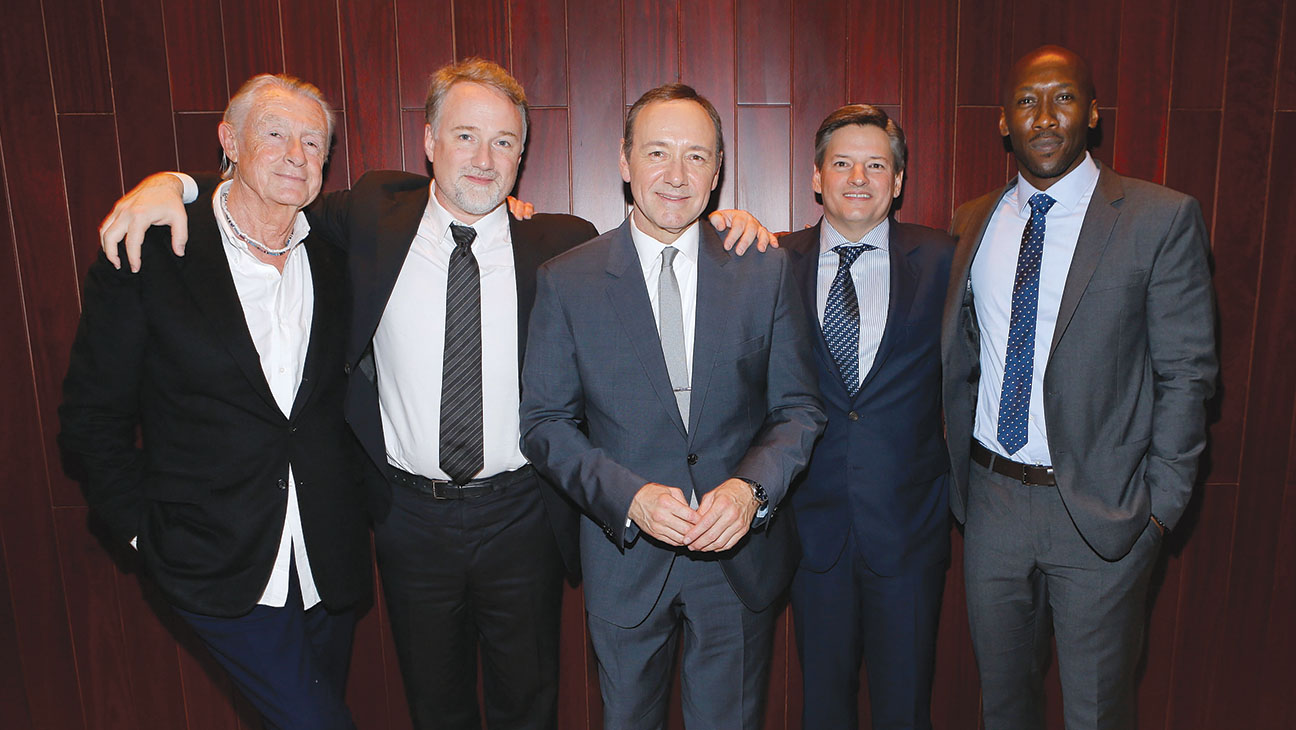
This article is adapted from Pandora’s Box: How Guts, Guile, and Greed Upended TV, by Peter Biskind (William Morrow).
In the early 2010s, director David Fincher began pitching his first television project, a dark, Washington-set adaptation of the British political drama House of Cards, with Kevin Spacey and Robin Wright attached. As he made the rounds, Fincher had one demand that the show’s writer, Beau Willimon, acknowledges was “hubristic”: He was not about to settle for a pilot but demanded a commitment for an entire 13-episode season, a flagrant violation of the way things were done. For HBO, Fincher’s first choice, this was a bridge too far.
Netflix, primarily known for its DVD-by-mail service, was still regarded as Blockbuster on speed or, as Jeffrey Bewkes, CEO of HBO’s then-parent company Time Warner, put it in 2010, the Albanian army — far from a fearsome competitor, with only one original show, Lilyhammer, under its belt. Consequently, Fincher and his partnering production company, MRC, didn’t go to it for financing, but just to see about a video window should they need one. Content chief Ted Sarandos was flooded with scripts, but the cigarette burns, coffee stains and well-thumbed pages indicated that they had made the rounds before ending up on his desk, so when Fincher knocked, he perked up. In their conversation with Sarandos, however, Cards producer Joshua Donen recalls, “We were bemoaning this whole notion of pilots, and they said, ‘We don’t really understand the whole pilot business either.’ ” Says Sarandos, “The idea of creating a piece of content that nobody would ever watch didn’t make as much sense to me as building something that we could predict with a better level of accuracy than anybody else.”
Netflix might not have understood the “whole pilot business,” but it did understand the algorithm business. Tossing William Goldman’s old adage — “Nobody knows anything” — out the window, Sarandos replaced it with “Our algorithms know everything.” Given the fog of war — programming war, that is — imagine the excitement around the promise of a surefire measure of success. If the “taste clusters” they identified could guide the purchases of their subscribers, why couldn’t they guide Netflix itself as it plunged into the treacherous waters of scripted originals? Sarandos applied his algorithms to the British House of Cards, a D.C.-based series like West Wing, Fincher’s previous movies, and those featuring Spacey. The results all pointed to the same conclusion: House of Cards would be a winner.
In 2011, armed with his numbers, Sarandos made an unprecedented, off-the-charts offer: Forget the pilot, forget gambling on straight-to-series. Netflix bet $100 million on two full seasons of Fincher’s show. “I knew that everyone would give them a development deal, most people would give them a pilot deal, someone might give them a full-season order, but no one is going to go all the way out to two seasons,” he recalls. “That was the offer they couldn’t refuse.”

Everyone told Sarandos he was crazy. Endeavor agent Ari Emanuel went back to HBO to up its offer, but the cabler held fast to its commitment to a pilot only. “MRC didn’t honor the handshake,” says HBO communications head Quentin Schaffer. “House of Cards was a show that we wanted to do, and thought we had it, and then Sarandos rather brilliantly snatched it away.” But HBO’s attitude was, “Let them spend and piss away a lot of money.”
Not satisfied with upending the cable applecart with its two-season buy, Netflix turned around and dropped the entire first season of House of Cards at once, all 13 episodes, thereby further scandalizing both the networks and cablers by discarding the old watercooler model that drip, drip, dripped out shows one episode at a time. “With House of Cards, when we put up all 13, I had every TV executive in Hollywood tell me what a moronic thing I was doing,” Sarandos recalls. “They insisted, ‘You have to stretch it out, you have to keep them waiting for more, you have to keep them hungry.’ ”
Sarandos, however, remembered that way back when he worked in a video store, his customers swallowed whole seasons of The Sopranos on DVD. So-called binge-watching completed the transformation cable had started when it had made it possible for viewers not only to choose what they wished to watch but when they wished to watch, and how much.
Streaming, and bingeing in particular, revived season-long and even series-long story arcs that allowed us to have story and character at the same time. Moreover, whereas network gospel dictated, “Don’t confuse the viewer,” eliminating the intervening week between episodes meant they could fracture their narratives. They used flashbacks, flashforwards and even flashsideways to begin episodes without totally disorienting viewers.
Yet another of Sarandos’ data crunches revealed that hourlong shows devoted as much as 20 percent of their screen time to reminding viewers what had happened in previous episodes.
Sarandos converted this 20 percent creative advantage into revenue. “When you can give the filmmaker a much bigger canvas, they’re going to make much better television, because,” he explained in Netflix-speak, “they’re worried about nothing but consumer engagement.”
Obviously, bingeing by itself is no guarantee of quality. After spending $100 million on two seasons of House of Cards, Sarandos turned around and dropped another $200 million on the instantly forgettable Marco Polo in 2014. But astonishing as the towering monuments of HBO’s golden age were and are, there’s little doubt that the bingeing model established a floor, if not a peak, of quality.
***

The culture at Netflix was established with the help of founder and CEO Reed Hastings’ good friend Patty McCord, with whom he drove to work every day and socialized on weekends. He made her head of HR. Employees were paid top salaries, gifted with unlimited expense accounts and vacation time, and encouraged to candidly and publicly disagree with and/or criticize one another, including their bosses. There were no executive dining rooms; the highest of the high, including Hastings and Sarandos, and the lowest of the low sat tray to tray in the company’s cafeterias, facilitating the goal of company-wide transparency.
Erik Barmack arrived in 2015 from Disney-owned ESPN to be vp international content. He was involved with developing or acquiring shows like The Witcher, Money Heist, Dark and so on. “In the early years there was more of a tech company culture,” he says. “It was less hierarchical than traditional media companies. There was a lot of autonomy in buying. Within my team, there were probably 10 to 15 people who could commission shows without really needing approvals.” He reported to Sarandos, with whom he had weekly meetings, “but as we went from a couple shows to 100-plus projects, it wasn’t like he was reviewing every show, or there was some kind of green-light committee where everything was costed out against a budget. It was more like he would say, ‘Oh, OK, you’re doing a romance in France.’ ”
Jenna Boyd moved from Nickelodeon to Netflix in 2017, where she was the executive in charge of original series in the children’s division. She brought in Avatar: The Last Airbender, among other shows. Looking for a change, she didn’t even consider Disney, because, she says, “We were getting all this research back about how kids were loving Netflix and YouTube and they were just leaving the linear world. It was done. At Nickelodeon, everything was a secret. At Netflix, every single company memo or strategy as well as financial information was available. You couldn’t do anything at Netflix without somebody having an opinion about it that they shared with you and everyone else. The intention of the feedback was to have really incredible type A players not be assholes. It was really cool.” In exchange for freedom and autonomy, Netflix demanded only that employees put the good of the company ahead of their own personal needs. It expected them to behave like grown-ups who could be trusted to supervise themselves and refrain from abusing the goodies Netflix so freely dispensed. As McCord summed it up, “Hire, reward and tolerate only fully formed adults.”
The “Netflix Way” was brilliant but implacable. The company regarded itself as a “dream team,” not a family, which is to say that hard work, loyalty and friendships were subordinate to performance — and even performance, no matter how stellar, delivered no guarantee of continued employment unless accompanied by innovation, which Hastings prized above all things. In other words, Netflix treated its approximately 11,300 employees like male cicadas. Once they finish the job for which they are hired, they are fired, unless their performance was outstanding — and innovative.
By January 2019, Hastings and Sarandos had grown the company so fast that total chaos reigned. “The volume ambitions were massive,” Boyd recalls. Volume was important, Sarandos explains, because it not only provides something for everyone but builds a library. And, Boyd continues, the rapid growth “spurred this incredible culture of feeling like, ‘Oh, I work in the kids’ division, but I could do this other kind of show because I found something fantastic.’ So, ‘Let’s do it.’ But it was incredibly confusing pitching multiple executives. There were no budgets. Every division was scaling up and there was a lot of overlap. There needed to be a come-to-Jesus moment recognizing everybody can’t do everything. That’s when a lot of reorganizing needed to happen.” Eventually, Boyd was reorg-ed out of her job.
From a strictly ethical and rational point of view, it was laudable, but Hastings’ attempt to inspire his employees to be their best selves sometimes brought out their worst selves. The aspirational slogans about candor, transparency and so on turned out to have a dystopian side. Instead of doing their best because they should, they did it because they were afraid — afraid of being fired if they didn’t.
In one instance, a woman in tears, having just been terminated, was packing up her boxes, while the rest of her team ignored her because they were afraid that “helping her would put a target on their back,” explained an employee. Some managers apparently felt driven to fire people lest they be regarded as soft and get fired themselves.

“Maxing up candor,” in Netflix-speak, required getting rid of “normal polite human protocols” in favor of a Darwinian approach that favored the survival of the fittest. Erin Meyer, who helped Hastings write his book, No Rules Rules,compared the Netflix Way to The Hunger Games. Employees were subject to the “Keeper Test,” which Hastings used not only to weed out hardworking but average performers, but also, in his words, “complainers and pessimists. Most of them would have to go.”
The Keeper Test requires the managers of various divisions to ask themselves how hard would they fight to keep someone. If the answer is “not that hard,” that employee is history. The culture of candor also demands that the blemishes and faults of newly departed employees be “sunshined” for the edification of their peers in company-wide assemblies.
Ironically, the Netflix Way eventually claimed McCord herself, who was known as the “Queen of the Good Goodbye” for the exemplary way she had fired scores of employees over the course of her 14 years with the company. Hastings even fired mathematician Neil Hunt, who was at Netflix from the very start, a close friend and one of the brains behind the company’s algorithms. Nevertheless, many employees valued their tenure at the company even after they were keepered out the door.
***
Less than six months after its House of Cards triumph, Netflix premiered a full season of Orange Is the New Black, a series created by Jenji Kohan, based on Piper Kerman’s prison memoir of the same name. For Netflix, Orange was the new green, driving up its stock price from under $60 a share in 2012 to over $400 a share in 2013. Of course, skyrocketing share prices had to be balanced against the cost of originals plus licensing fees for its movies, amounting to a $58 million negative cash flow in 2012. But Netflix was a company that, even when it was broke, never shied away from going for broker. Just as important, Orange firmed up the streamer’s reputation for providing a warm welcome for creatives. Says then-vp content Cindy Holland, “There was some expectation that House of Cards would be good because of David Fincher — not because of us. There was a lot of chatter in the industry that you can get lucky once. Orange proved we weren’t just a one-trick pony.”

Flaunting its success, Netflix leased its new home in 2015, a 14-story Icon office tower on the corner of Sunset and Van Ness in the “media corridor,” resembling ill-fitting slabs of cream and blue Legos. Visitors didn’t just enter a lobby so much as a nearly 5,000-square-foot “experience,” featuring an 80-by-12-foot LCD screen playing Netflix images spanning one wall that would put Imax to shame; another wall was jammed with serried rows of plants, more than 3,500 of them, with their own irrigation system. Plus, a 13-story atrium.
In 2016, the year it released Stranger Things to wide acclaim, Netflix announced that half its shows would be originals. The other streamers had to chase it or look like lesser values. Despite some evidence to the contrary, rivals claimed to be unimpressed by Netflix’s algorithms, and the fact that it refused to release numbers muddied the waters.
AMC’s president and CEO Josh Sapan called data mining a “goddamn disaster,” useful for marketing and promotion but useless on the creative side. “You can’t number your way to greenlighting a show and you can’t get data that shows you how to fix a story.” Netflix executives downplayed the role of Big Data in their original programming, trying to sound human, lest all the chatter about algorithms was making them come off like quants, bots or worse, “surveillance capitalists,” off-putting to creatives.

Netflix found itself in an unenviable position, paying a heavy price for its success. Not only did it now have to spend astronomical sums for network shows like Seinfeld, for which it forked over a reported $500 million, but it also had to sign celebrity showrunners to those rich overall deals it had always shunned. In short succession, superstar showrunners Shonda Rhimes, Kenya Barris, David Benioff and D.B. Weiss, and Ryan Murphy all inked nine-figure contracts with the streamer.
Holland oversaw most of those rich deals, but it’s hard to imagine that she was allowed to dip into the honey pot on her own, without input from her bosses. As another source told The Hollywood Reporter, “The buck stops with Ted,” but if they don’t pay off, “I’m sure he will try to blame Cindy.” Most of these payouts, however, were not as costly as they looked. Netflix pioneered the so-called cost-plus front-end deals that were sweetened by the “plus,” generally a 10 or 20 percent bonus. But the talent was excluded from the lucrative downstream profits that shows traditionally racked up in DVD sales and syndication — licensing and relicensing fees from other services — that could bring in income for years, because its streaming model eliminated such “long tail” opportunities. Residuals amounted to a fraction of the income creatives received under the old broadcast system.
These front-end deals have cost creatives an estimated $1.5 billion in lost income. Jeff Sagansky, a former top network executive, nailed the streamers for “backend theft” and “predatory behavior.” He went on to say, “We are in a golden age of content production and the dark age of creative profit sharing.” Sagansky’s outrage is shared by the entire creative community, which feels, with ample justification, that it is working harder for less money.
“Without syndication, you can’t monetize your monster hits and turn their success into cash,” says Steven Soderbergh. “Netflix has moved us, in economic terms, out of a Newtonian world and into a quantum world where it becomes very difficult to quantify whether or not it is quote, unquote worth making something.”

In 2021, Netflix hit the 200 million subscriber mark, which enabled it to announce it no longer needed to borrow for “day-to-day operations.” Although it reportedly was still $10 to $15 billion in debt, it was optimistic it could pay off this debt without jeopardizing its content budget, and 2022 was the first year it was supposed to have a positive free cash flow. It aired 70 new movies in 2021, more than one a week, featuring the likes of Leonardo DiCaprio, Meryl Streep and Idris Elba.
With an assist from COVID that accelerated home viewing, Netflix was humming. But the arrogant attitude of Hastings and Sarandos has made “Netflix” a dirty word in the business and presaged the struggles it would face when, in 2022, it failed to meet its subscriber targets and its stock price tumbled, sparking a cooldown throughout the streaming industry. The Ankler shared a story about a producer who ran into the two men at an event and confronted them, saying, “You guys are being really difficult making a decent deal.”
“Yeah! We know!”
“Why would you treat people like us, who are bringing you projects, like that?”
“You’ll be back.”
In other words, it wasn’t because they were “pricks,” it was about power. They were being difficult because they could. As another producer explained, “It used to be the town ran on fear and greed. [Now] it runs on, ‘You’ll be back.’ ” And another, “It used to be a handshake business, and sometimes contracts weren’t signed until a show was delivered.” Now, “everything has … [to go] through business affairs … Netflix and the streamers destroyed the relationship side of the business. There’s no trust and no relationship anymore.
“It’s now just commerce.”

Adapted from the book Pandora’s Box: How Guts, Guile, and Greed Upended TV by Peter Biskind. Copyright © 2023 by Peter Biskind. Reprinted by permission of William Morrow, a division of HarperCollins Publishers.
This story first appeared in the Nov. 8 issue of The Hollywood Reporter magazine. Click here to subscribe.
Keywords
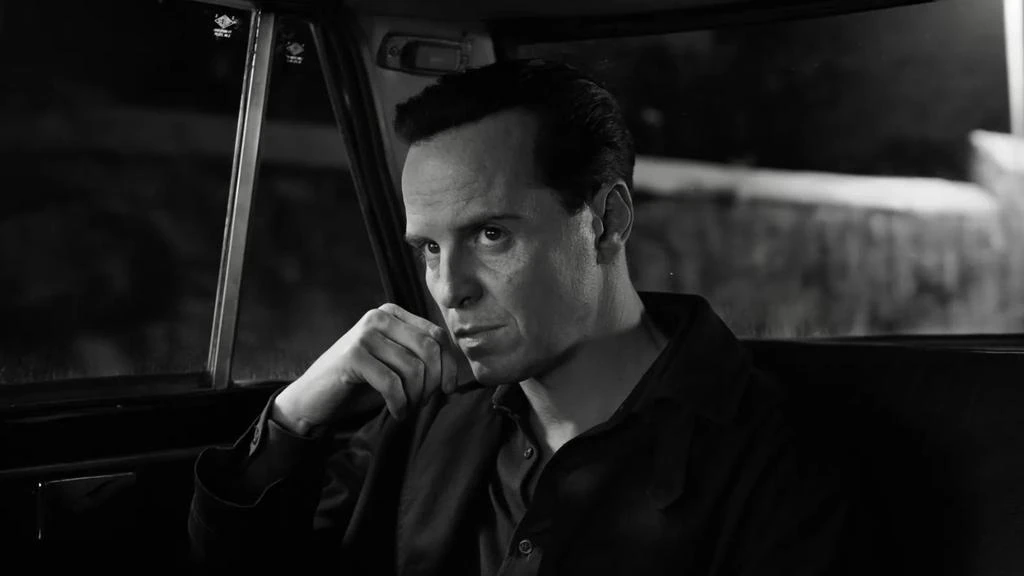
11/04/2024
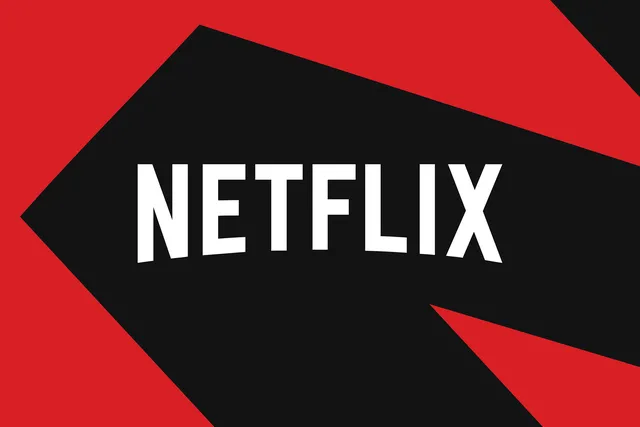
24/01/2024
Newer articles
<p>Ukraine has begun using longer-range ballistic missiles against Russia that were secretly provided by the US, American officials have confirmed.</p>
China warns relations with US could slip into ‘downward spiral’ if red lines crossed
King’s Funeral Plans Dusted Off—as Health Remains a Mystery
Megan Thee Stallion’s Ex-Makeup Guru Talks. It’s Not Pretty.
KANYE WEST PLANS TO LAUNCH 'YEEZY PORN' ... Could Be Coming Soon!!!
Here’s why Iran decided not to attack Israel again
Can Zendaya make the leap from tween idol to Hollywood heavyweight?
Bill Maher's audience roars with laughter after he mocks Don Lemon to his face
Trump lawyer tells SCOTUS that president could have immunity after ordering military to assassinate a political rival
MAJOR ANNOUNCEMENT: Buck Palace updates on King Charles’ condition
